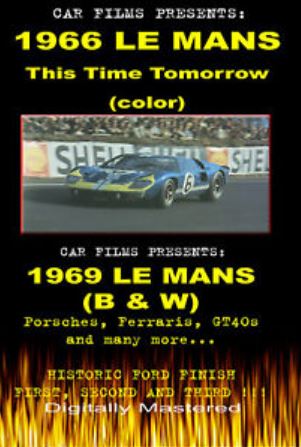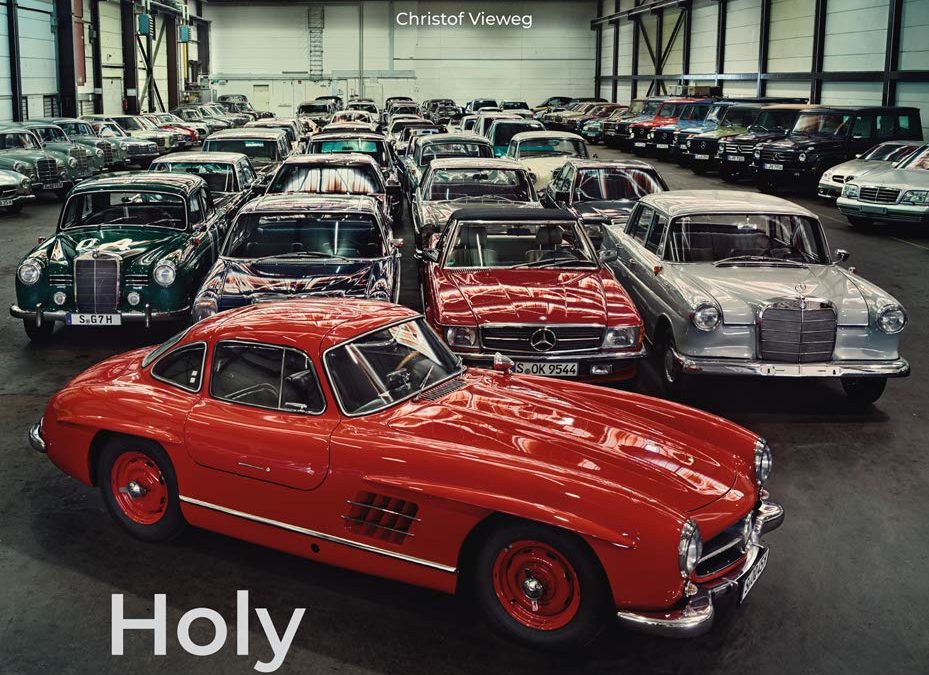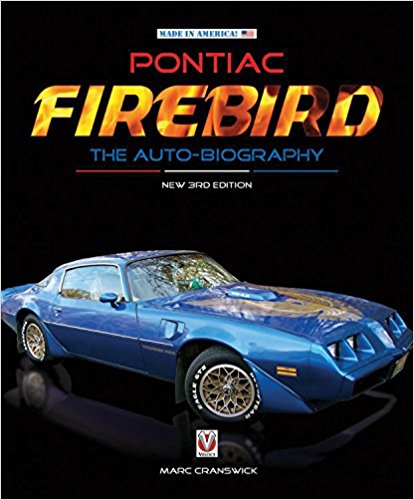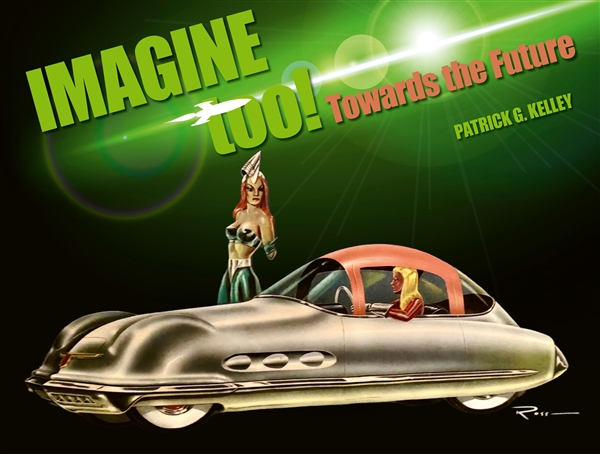
An artistic view of the 1966 Le Mans race. Ford brought a team of GT40 Mark II’s that finished first, second and third! In this historic blanket win for Ford, the first place car is the same chassis that went on to win again in 1969. A unique record of this race with driver commentary.
1969 Le Mans B&W
See this rare coverage of the car that won the 24hr of Le Mans twice! This is one of the first satellite feeds fom europe, a technical marvel on its own.
This DVD shows the race day and night with great helicopter coverage at the finish when Ford wins by seconds, commentary by Chris Economaki and Phil Hill.

Since the earliest issues of the Alfa Market Letter and on through to its subsequent transformation into Sports Car Market, Publisher Keith Martin has been the voice of reason throughout the ebbs and flows of the collector car hobby. In Shifting Gears, Volume 1, Keith shares his insights and musings into an era when auctions were first shown on television and tired old racing cars became seven-figure collectibles. A master class in automotive history, Keith’s columns provide an educational and entertaining look at where we once were and still provide valuable lessons about where we are headed tomorrow.

A thrilling photographic account of the treasure trove of cars kept by the Mercedes-Benz Museum in Stuttgart that are not currently on display to the public
The Mercedes-Benz Museum in Stuttgart is one of the largest and most visited industrial museums in the world. But the 160 or so automobiles on display are only a small part of the shiny chrome treasures that form the Mercedes-Benz Classic vehicle collection. Another 1,000 historical models are ‘parked’ in secret places outside Stuttgart – these secret places are called the ‘Holy Halls’.
This collection is the treasure trove of the brand. It has existed since 1923 and offers a comprehensive overview of the model history of Mercedes-Benz. Cars with special technology and equipment are stored here, as are the silver arrows of Caracciola, Lang and Fangio, the Pope’s carriages, the state cars of the young Federal Republic of Germany or Mercedes models that became collectors’ items due to their prominent previous owners. Some of these exhibits are well protected and waiting in special wooden boxes for their next use at exhibitions, fairs, events or classic car races. Others stand next to each other as silent witnesses of the past. Each time a model is modified, the collection is extended by the last vehicle of the discontinued series, which experts believe will be one of tomorrow’s classic cars.
The ‘Holy Halls’ are not open to the public; enquiries from editorial offices and TV teams have often been rejected. But, during the years 2016 to 2018, almost all the vehicles of the Mercedes collection were photographed. Thus, a unique photographic collection was created, the automobile history from more than ten decades; many of the previously unpublished photographs are exclusively available here in this book. In addition, Mercedes-Benz Classic agreed to open the ‘Holy Halls’ for an external photo team and provide information about the car models stored there.
For the first time, it has been possible to produce a fascinating illustrated book with panoramic and detailed shots from the ‘halls’, and lively photo reports on cars that tell stories – from the first Benz batting motor car to the latest Formula 1 racing car. Equally thrilling are the stories of the unique specimens and prototypes that are stored in the ‘Holy Halls’: Mercedes models that never went into production are presented for the first time. The stories about the selected automobiles of the vehicle collection are supplemented by historical recordings from the Mercedes-Benz Classic archive.

Over a 40 year period the Pontiac Firebird has earned a unique place amongst speedy domestic cars. What started out as another contender in the “me too” Mustang pony car race ended up becoming so much more. Only Pontiac could have come up with a coupe like the Firebird, and it was the Firebird that kept the performance fires burning once the mighty GTO was gone. The Firebird has garnered a reputation for being larger than life and many have come to view it as a large car, but that was not always the case. Pontiac’s Firebird was originally a small US car, classified as a sport compact. In the days when people used the terms personal car and specialty car the Firebird wasn’t even all that big. However, after the first major gas crunch viewpoints altered. One thing that didn’t change was Pontiac’s commitment to keeping their Bird flying high.
The Firebird altered significantly through its lifetime, reflecting general changes and trends in the auto world at large. The Firebird’s tale reflects the development of the mainstream domestic car in the modern era. V8s, turbo V8s, turbo V6s, HO V6s, overhead cam I6s and even a Super Duty four banger. If there’s a performance avenue to be explored then the Firebird has been there, and Pontiac never quite gave up on the hope of using a transaxle.
Popular with car fans and in the sales charts, the Firebird has had a high profile both in television and at the movies. The Pontiac Firebird has also received its fair share of attention from hot-rod shops, tuners and car customizers. As per Pontiac tradition the Firebird delivered what folks expected in the real world. Even during the lean years the Firebird kept the 400 cube 4 speed dream alive when others had moved on to paint and tape specials. Fast cars didn’t die out in 1973, they just started wearing the “Screamin Chicken” on their hoods.
As a collector car the Firebird has all the credentials. A strong fan base, wide variety of power train and trim options, various low volume and commemorative models, and a healthy helping of nostalgia thrown in for good measure. A number of Firebird models are already valuable classics, but certain younger versions can be counted on as some of the fastest appreciating collector cars of today and tomorrow.
The Firebird legend just gets bigger. From the go faster 1960s, gas mileage and pollution controlled 1970s, performance renaissance of the 1980s, through to the indifference of the 1990s. The Firebird was always there, this is its story. Cutting edge research and over 320 photos bring this in-depth, incredibly detailed story to life.
This edition feature an extra 40 images and new text.

The automotive industry has a tumultuous history rife with back-room deals, brilliant innovation, colorful characters, and marked by the complete transformation of our planet. In Auto Empire, author Choi paints a compelling picture of the birth and growth of the modern auto industry. And how acquisitions and mergers, in particular, have paved the way for the auto industry of today and tomorrow. From the first steam-powered carriage, to alternative energy and self-driving cars, the world can barely accommodate the ambitions of this massive industry. But in Auto Empire, Choi fearlessly tackles the industry in all its glory and failings to illuminate how it transformed itself and the world. Choi unfolds a fascinating history that spans diverse industries, epic upheavals, and touches every corner of the world. Auto Empire seamlessly weaves the eras of the automotive industry into a thought-provoking portrait of its continued evolution through acquisitions and mergers. To think, we went from sweatshop assembly lines and 14-hour work days, to high-tech automation and digital innovation. In Auto Empire, Choi captures this amazing spirit of transformation.

“With millions of participants worldwide, motocross and off-road motorcycle riding are the most popular amateur motorsports in the world—and, many agree, the most physically demanding. For a sport that asks so much of so many, a training manual is a must—and this one is the very first to make the necessary know-how accessible to the amateur rider. While providing sound advice for the would-be Ricky Carmichael of tomorrow, this handbook offers a no-nonsense, real-world approach that the average racer or rider can understand—and turn into real results.
Among the topics the book covers are: weight training and proper nutrition in a fast-food world; age-specific training programs; gear; scheduling; staying hydrated, healthy, and injury-free: keeping a log; cross-training; balance, reflexes, and flexibility—and how to improve all three; race-day warm-ups and stretches; arm pump and how to train it out of your system; taking it to the next level—for the would-be pro riders; trainers, gyms, online, and published guidance; and staying motivated and avoiding burnout.”

Radical Wings and Wind Tunnels presents a behind-the-scenes look at how the NACA, and today’s NASA, have used wind tunnels and flight-testing in past and current projects to advance aeronautical science. NASA’s Langley Research Center, located in Hampton, Virginia, was established on July 17, 1917, and has played a key role in the research and development of civil and military aviation since its infancy.
For over 90 years, Langley’s staff has wind-tunnel tested or test flown a wide range of leading-edge aircraft designs including vertical takeoff and landing aircraft, advanced fighters, civil transports, and high-speed supersonic and hypersonic vehicles. Results from the legacy of Langley’s pioneering basic and applied aeronautical research have been incorporated into virtually all U.S. civil transports and military aircraft. This book describes the very unique testing capabilities of several historic Langley wind tunnels, such as the gigantic 30 x 60 ft Full Scale Tunnel, the Vertical Spin Tunnel, and the Free-Flight Tunnel.
The major focus of the book is a discussion of the roles these wind tunnels and the NACA and NASA organizations played in R&D activities for more than 60 radical aerospace vehicles that did not, or have not yet entered production. The contents present an illuminating perspective on how the government’s research agencies interacted beneficially with the military and civil communities for many of this nation’s innovative aeronautical undertakings. Coverage begins in the 1920s with research on the earliest innovations for monoplanes and extends to current research on tomorrow’s aircraft including hypersonic vehicles and aircraft designed to explore the Martian environment. Topics also include previously unpublished details of NACA activities in development of U.S. military aircraft in WWII, Langley’s work on parawing vehicles, key activities for V/STOL aircraft, challenges for lifting bodies and reentry vehicles, ongoing research to remove the barriers for economically viable supersonic commercial transport, the latest technology for highly maneuverable fighters, and a look at the future. The photos in this edition are black and white.

The Chrysler engineers went through every combination that was possible. Whether it was different springs, different shocks, different sway bars, different weights They had a book, it must have been about a two-by-three foot book! It was a heck of an engineering force.-Richard Petty Seven-time NASCAR champion Winner of 200 Grand National/Winston Cup racesAcross decades of thrilling competition, many of NASCAR’s greatest drivers-from Marvin Panch to Jim Paschal, Richard Petty to Buddy Baker, Bill Elliott to Ward Burton, Ryan Newman to Kasey Kahne-have thundered around America’s legendary racetracks at the wheel of Chrysler Corporation’s Dodge and Plymouth stock cars. Power, innovation, and design have characterized these remarkable vehicles, and NASCAR’s record books have been written in the wake of their no-holds-barred competition.Now, the full story of Chrysler’s conquest of stock car racing is told in TOP SPEED: Dodge and Plymouth Stock Car Racing. Written by award-winning motorsports journalist Frank Moriarty, this book begins with the corporation’s first sales and earliest laps, then marches through the years, arriving in the present-day world of the NASCAR “Car of Tomorrow.”Like Moriarty’s best-selling SUNDAY DRIVERS: NASCAR Winston Cup Stock Car Racing and the acclaimed SUPERCARS: The Story of the Dodge Charger Daytona and Plymouth SuperBird, this new book introduces you to all the machines that have made Chrysler’s racing efforts so successful. But equally important are the men behind the wheel, and you’ll meet them all-including a special section containing exclusive conversations with Richard Petty, Buddy Baker, Pete Hamilton, and the legendary crew chief Harry Hyde.

Industrial Strength Design: How Brooks Stevens Shaped Your World is a long overdue introduction to the work of visionary industrial designer Brooks Stevens (1911-1995). Believing that an industrial designer “should be a businessman, an engineer, and a stylist, in that order,” Stevens created thousands of ingenious and beautiful designs for industrial and household products — including a clothes dryer with a window in the front, a wide-mouthed peanut butter jar, and the Oscar Mayer Wienermobile. (“There’s nothing more aerodynamic than a wiener,” he explained.) He invented a precursor to the SUV by turning a Jeep into a station wagon after World War II, and streamlined steam irons so that they resembled aircraft. It was Brooks Stevens who, in 1954, coined the phrase “planned obsolescence,” defining it as “instilling in the buyer the desire to own something a little newer, a little better, a little sooner than is necessary.” This concept has since been blamed for everything from toasters that stop working to today’s throwaway culture, but Stevens was simply recognizing the intentionally ephemeral nature of a designer’s work. Asked once to name his favorite design, he replied, “none, because every one would have to be restudied for the tastes of tomorrow.”
This book, which accompanied an exhibit at the Milwaukee Art Museum (the repository for Stevens’s papers), includes 250 illustrations of designs by Stevens and his firm, many in color. Glenn Adamson, exhibition curator, contributes detailed studies of individual designs. John Heskett, Kristina Wilson, and Jody Clowes contribute interpretive essays. Also included are a description of the Brooks Stevens Archive and several key writings by Brooks Stevens.

Architect John Parkinson died in 1935, and the Los Angeles Times praised him: “Future generations have only to walk through the streets of Los Angeles to be reminded how much John Parkinson in his lifetime contributed to the city that grew up under his hand.” In Iconic Vision: John Parkinson, Architect of Los Angeles, author Stephen Gee proves that this singular visionary created the look of America’s most dynamic metropolis, long before the world recognized the city’s importance. Consider that among more than four hundred buildings in the City of Angels that carried his architectural imprimatur, John Parkinson designed:
- Los Angeles City Hall, the most iconic building in California, the tower that changed a futuristic city’s skyline forever;
- Bullock’s Wilshire, the towering structure that rivals the Chrysler Building as America’s premier Art Deco edifice;
- Los Angeles Memorial Coliseum, the world’s only modern stadium to host two Olympic Games, 1932 and 1984–and still home to the USC Trojans;
- Los Angeles Union Station, the Mission-Moderne-Art Deco masterpiece that brought together California’s railroads and became a legend before the first trains roared in.
Iconic Vision, the first biography of the master architect, documents–in remarkable detail and images–Parkinson’s monumental contributions to the city he loved. Although other architects’ names have become synonymous with the city, John Parkinson designed more landmark buildings in Los Angeles than any other architect, living or dead. And, while other architects may have taken credit for Parkinson’s designs, Stephen Gee’s penetrating biography establishes the truth. He tells the story of a man who envisioned tomorrow.














